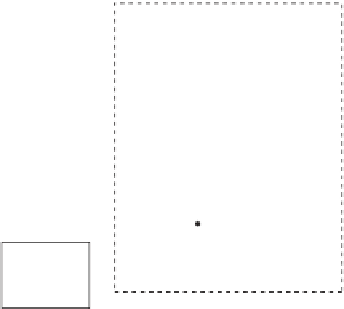Geography Reference
In-Depth Information
Subclass 326/16: Test facilitate feature
E = 205 other subclasses /116 patents = 1.77
ATG TEST MODE SIGNAL
50
82
38
CONTROL
104
40
Subclass 326/82:
Current driving fan
in/out
E = 101/50 = 2.02
ENABLE - IN 1
62
58
66
44
41
70
54
74
105
ENABLE - IN 2
76
80
60
106
42
56
84
ENABLE - IN 3
86
96
100
98
107
43
102
90
Subclass 326/56: Tristate
E = 158/131 = 1.21
94
ENABLE - IN 4
92
Subclass 326/31: Switching threshold stabilization
E = 104/69 =1.51
Interdependence
k
= 4 subclasses /(1.77 + 2.02 + 1.21 + 1.51) = 0.61
Figure 15
.
1
Calculation of interdependence for patent #5,136,185
of inventors. Fleming and Sorenson (2004) asked a sample of patent holders the fol-
lowing question, based on Ulrich's (1995) dei nition of interdependence: 'Modules are
said to be coupled when a change made to one module requires a change to the other
module(s) in order for the overall invention to work correctly. How coupled were the
modules of your invention?' They then compared survey responses to calculated
k
for
the corresponding patents and found a signii cant correlation between inventors' percep-
tions of coupling and the calculated degree of interdependence.
Concrete examples may clarify the metric further and help to link it to our core
hypothesis. Consider a digital technology patent, #5,136,185, i led by the third author
of this chapter. Figure 15.1 outlines the calculation of
k
for this patent and the mapping
of the USPTO classii cation scheme to the components used. Here, 326/16 identii es the
'Test facilitate feature' subclass, which implements a testing mode within a semiconduc-
tor chip. Prior to its appearance here, this subclass had been recombined 116 times with
205 other components, implying an observed ease of recombination score of 205/116 =
1.77. Also, 326/56 indicates the 'Tristate' subclass, 326/82 points to 'Current driving fan
in/out', and 326/31 identii es the 'Switching threshold stabilization' subclass (essentially a
priority encoder). Figure 15.1 illustrates the location of these components on the circuit,
the calculation of their ease of recombination scores, and the calculation of the patent's
interdependence,
k
(= 0.61) -
a level slightly above the mean
k
for our sample.
The invention described above assists engineers in testing the logic gates on new chips
- a dii cult task when chips can contain hundreds of thousands or even millions of such
gates. Even though the patent appears to disclose much of the important information,
it does not reveal the proprietary test generation algorithm, and how that algorithm
manipulated the components (in particular, the 'test facilitate feature'). Without access







































































































